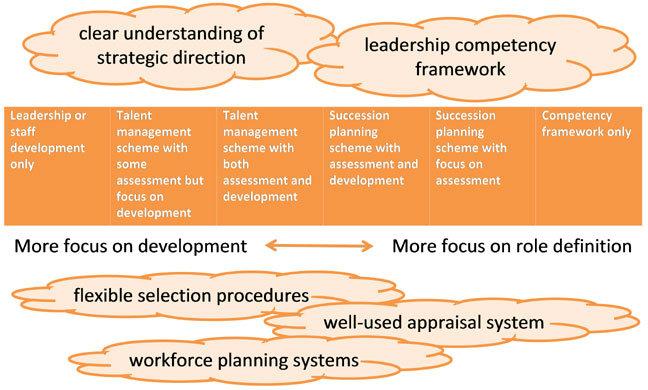Succession planning aims to reconcile demand and supply of the leadership, professional and technical expertise and capability that will be key to an organisation’s success in the future. It is a process by which one or more successors are identified for key roles, and career moves and/or development activities are planned for these successors. Successors may be fairly ready for the move (short-term successors) or seen as having longer-term potential (long-term successors). The focus is the skills or roles needed.
Talent management is the systematic identification, nurturing and developing of high-potential individuals who are seen to be of particular value to the organisation in the future. The focus is the individual.
Succession management is a wider set of resourcing and development processes within which succession planning sits. These include recruitment and selection, workforce planning, skills analysis, talent management and management development (including graduate and high-flyer programmes). The focus is the system.
To understand how these definitions coexist and interact, take a look at our visualisation below.
For further reading, the CIPD have factsheets on talent management and succession planning.
Visualising the definitions
This diagram illustrates the way succession planning, talent management and succession management relate to one another according to our definitions. Succession activity can be envisaged as a continuum, based on whether there is more of a focus on development or more of a focus on role definition and assessment for roles. Activity in the continuum ranges from staff development, through talent management and succession planning, to role definition or competency frameworks.
Surrounding the continuum are the processes that need to support succession planning and talent management. The more robust these are, the greater the likelihood that the organisation will be able to operate a successful scheme in the middle of the continuum, with both role definition and development.
